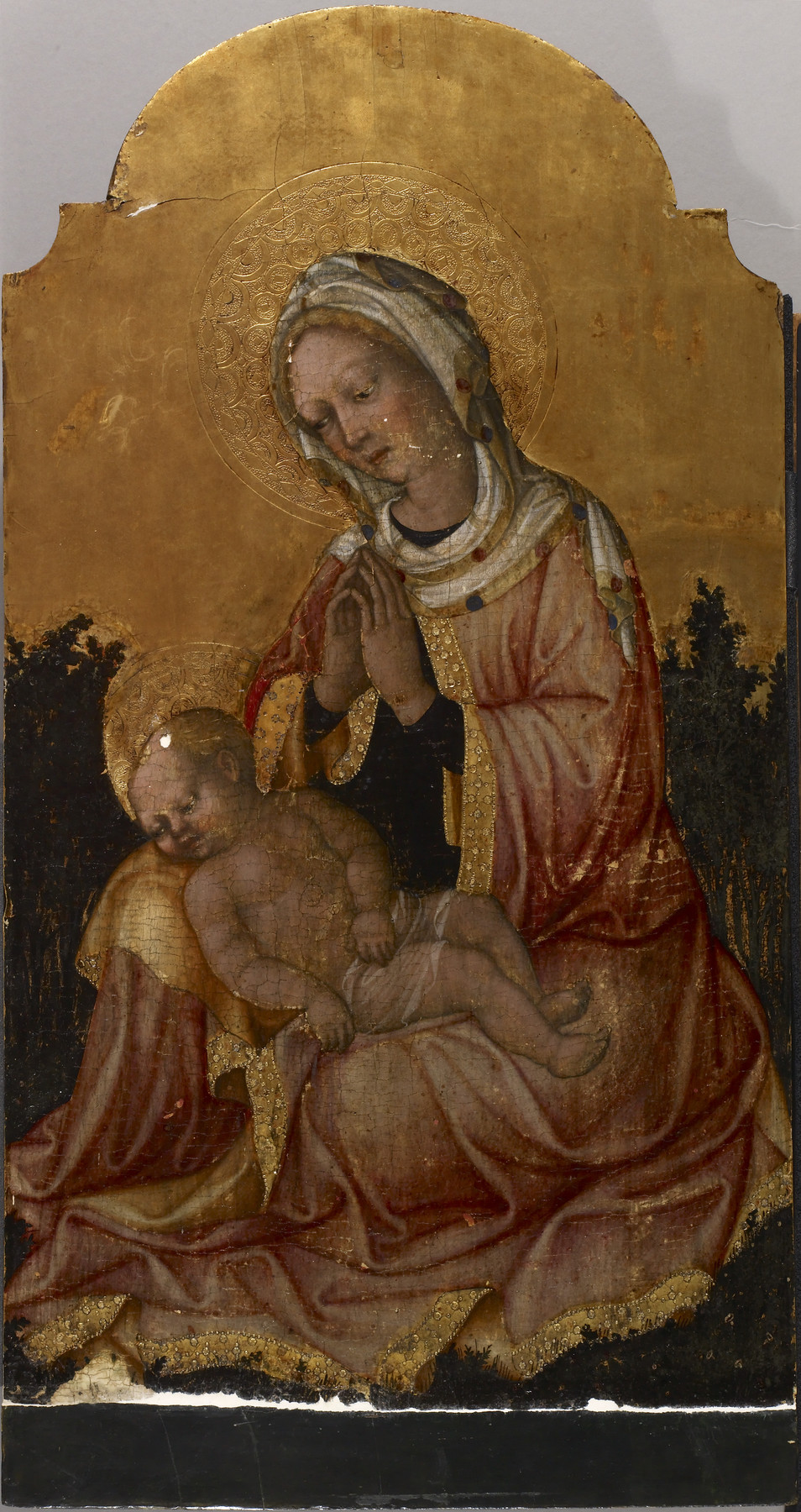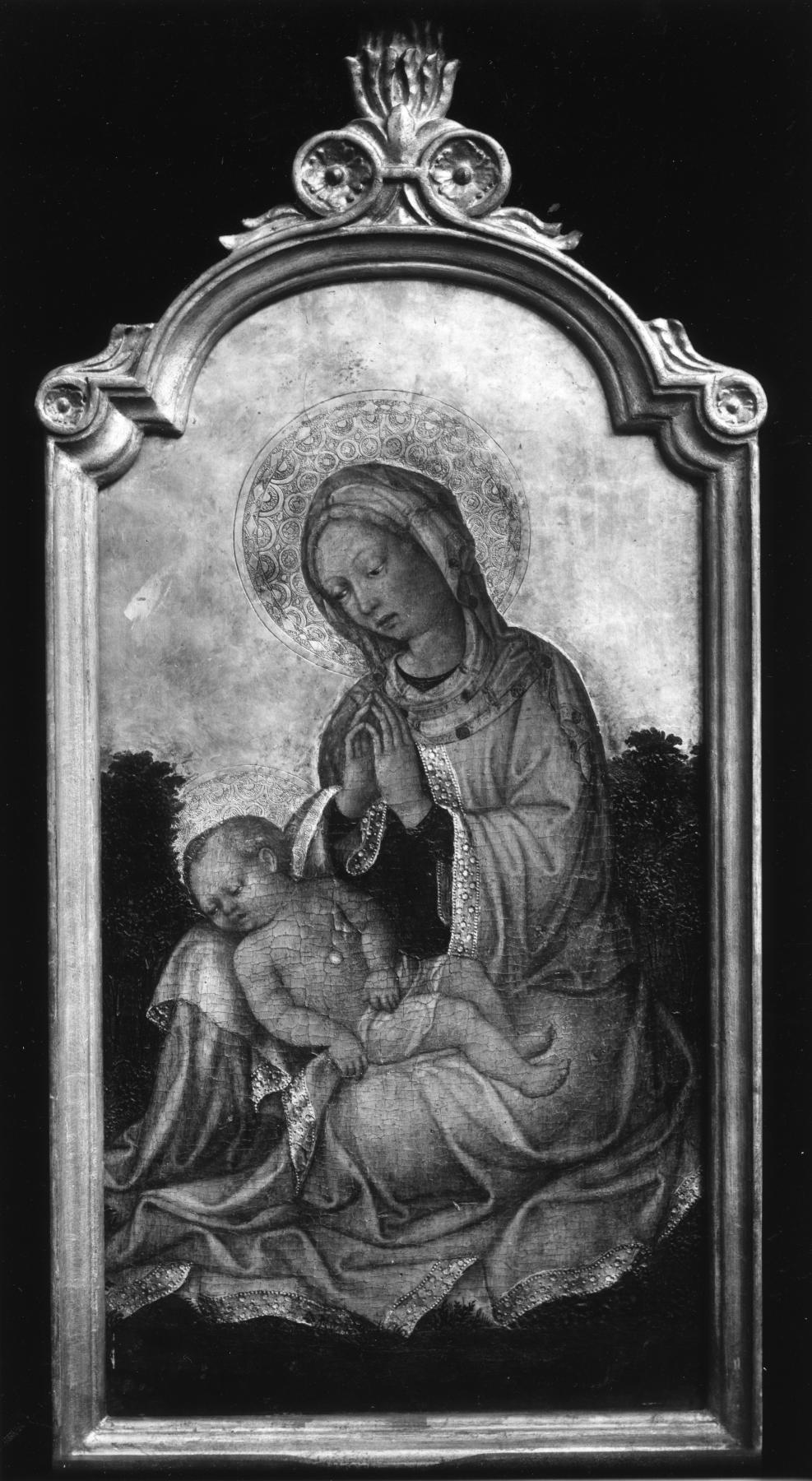The Madonna of Humility
(Renaissance Europe )
Seated in the grass wirh the infant Christ on her lap, the Virgin is depicted not as Queen of Heaven but as a humble figure who is not too proud just to sit down in the grass. Such images known as the Virgin or Madonna of Humility became popular in late 1300s and early 1400s in Italy, Flanders, and Germany. The line of low trees or shrubs to the rear further suggest a garden setting, encouraging the sense that here in a secluded private setting the worshipper could share his or her hopes and fears with this tender mother figure. This natural setting and sweetness of the facial types are both characterisitcs of this early Renaissance period in Venetian painting and were likely derived from a prototype by Gentile da Fabriano (1370-1427), a painter active in Venice during the early 1400s. As the painting served a devotional purpose, Mary’s low position in an outdoor setting would have reminded viewers to embody her spirit of humility in the real world.
The gently flowing drapery exhibited throughout the Virgin’s rose-colored mantle, as well as her meditative facial expression and small, delicate hands are typical characteristics of Giambono’s style. Active in Venice during the first half of the 1400s, the artist was influenced by the painters Gentile da Fabriano and Jacobello del Fiore (1370-1439). He also worked as a sculptor in wood and in 1444 he designed a mosaic cycle in the Mascoli Chapel in the Basilica of San Marco in Venice. Though this painting is unsigned, its attribution is confirmed by comparison with Giambono’s few signed works, such as the “Polyptych of San Giacomo” (1443-45) in the Accademia in Venice, and the “Madonna and Child” (1435-1440) in the National Gallery in Rome. Technical analysis has shown that at some point Giambono’s original gold leaf background was scraped off and replaced with gesso and gold, and that the haloes of the Madonna and child have been reshaped and retooled.
Provenance
Provenance (from the French provenir, 'to come from/forth') is the chronology of the ownership, custody, or location of a historical object. Learn more about provenance at the Walters.
Bernard Berenson [date and mode of acquisition unknown]; Henry Walters, Baltimore, 1912, by purchase [from Berenson]; Walters Art Museum, 1931, by bequest.
Geographies
Italy, Venice (Place of Origin)
Measurements
Painted surface H including additions at top and bottom: 24 1/2 x W: 12 7/8 in. (62.2 x 32.7 cm); Surviving panel H: 19 11/16 x W: 12 7/8 x D including auxiliary panel: 7/8 in. (50 x 32.7 x 2.2 cm)
Credit Line
Acquired by Henry Walters, 1912
Location in Museum
Not on view
Accession Number
In libraries, galleries, museums, and archives, an accession number is a unique identifier assigned to each object in the collection.
In libraries, galleries, museums, and archives, an accession number is a unique identifier assigned to each object in the collection.
37.537








